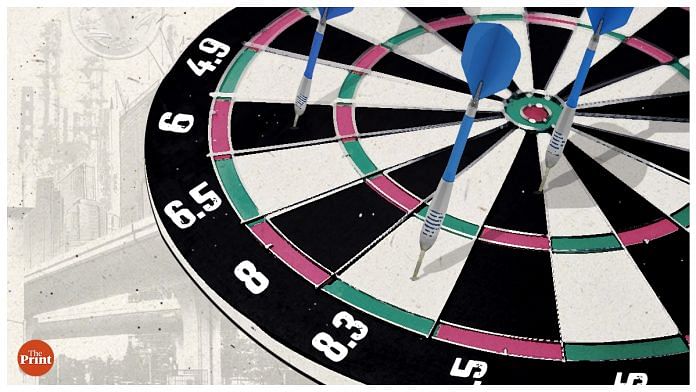Growth forecasts for the Indian economy have converged at optimistic levels. The recovery this year is pegged at a range between 8.3 per cent (World Bank) and 10.5 per cent (the government), with the International Monetary Fund (IMF) in between, at 9.5 per cent. Sundry economists at investment banks also have their forecasts in the mid-range. These recovery-year numbers, taken with the pandemic-driven drop in GDP last year of 7.3 per cent, yield an annual growth rate of about 1 per cent. That compares marginally unfavourably with global GDP performance in these two years, and with the performance of emerging market economies. Indeed, the World Bank says this is going to be the best recovery year for the global economy in 80 years, whereas India has a few years in the last 40 when it did better.
With that as a backdrop, what comes after the recovery? The chief economic adviser has forecast 6.5 per cent to 7 per cent growth in 2022-23, and 8 per cent after that, whereas the World Bank’s figures go the other way, from 7.5 per cent to 6.5 per cent. The IMF is more optimistic, putting the growth number for next year at 8.5 per cent. Such numbers are indicative, with substantial revisions par for the course. The IMF in particular has a record of being overly optimistic — its India growth forecast for this year has been lowered from 12.5 per cent in April to 9.5 per cent in July. Bear in mind, also, that officially-recorded growth in the three years before the pandemic had averaged only 5.8 per cent.
So, if not the past record, what explains the new optimism? The chief economic adviser’s forecast of growth chugging along at 8 per cent after next year is based on the expected outcome of the government’s reform measures — and he lists quite a few. Another factor could be the unusual momentum in the world economy — global growth in 2022 is forecast by the IMF at 4.9 per cent, after 6 per cent this year. These are well above trend. World merchandise trade may see double-digit growth, and India’s exports seem to be enjoying a boom. In similar conditions before the financial crisis of 2008, India had enjoyed its best-ever growth years.
Also on the positive side, there will be productivity gains from the organised sector displacing the unorganised because of the way the pandemic has played out — with flow-through benefits for corporate profits and tax revenue. The digitisation of economic activity also promises productivity gains.
Also Read: Nirmala Sitharaman is proving to be a pleasant surprise as finance minister
Qualifying the expectations
Still, one must qualify these expectations. First, the government has a record of promising jam tomorrow (remember the old talk of double-digit growth). Second, reform measures have a habit of under-delivery. Consider all the banking reforms so far, including the Insolvency and Bankruptcy Code, the ‘Make in India’ initiative, electricity sector reform (Uday), the limited benefits so far from the massive investment in transport (especially railway) infrastructure, and so on.
Consider also a key contrast between the last bout of rapid growth and now: An investment boom in the pre-2008 years, against the subsequent declining share of investment in GDP — a cumulative decline of more than a sixth. Another factor of production (labour) has suffered too as the employment ratio has fallen sharply.
These numbers could recover, just as excessive corporate debt levels have corrected, but the organised sector’s profit-driven recovery will not be enough if the small- and medium-scale sectors don’t get back on their feet. Remember that, in the absence of protective legislation, aggregator businesses like Zomato and Uber will squeeze vendors and accentuate winner-loser dichotomies. Such trends will not support a consumption recovery, without which fresh investment will not kick in, except by the government — which has to worry about the sharp spurt in public debt.
A steep jump in medium-term growth rates, of the kind projected, needs all engines of the economy to be firing: Private and government investment, domestic demand and exports. The government has bet on growth in its own investment, while exports are doing well. That’s two engines out of four.
By special arrangement with Business Standard
Also Read: Covid, Pegasus, China, climate crisis — life on Earth is becoming an Orwellian nightmare



